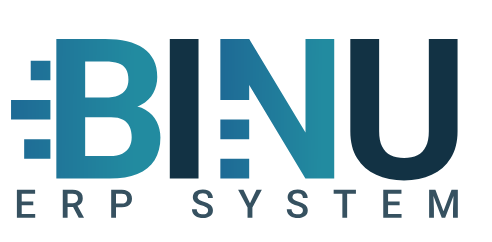Introduction to what is an ERP System?
An ERP 101 (EPR stands for Enterprise Resource Planning) that is a computer system or an integrated software solution designed to streamline business and/or company processes, automate workflows, and manage various functions within an organization. By unifying operations such as supply chain management, inventory, production planning, and finance, ERP enables companies to enhance efficiency, reduce costs, and maintain competitive advantages.
ERPs are critical in modern manufacturing, providing real-time insights, collaboration across departments, ensuring best practices and compliance like quality control or similar.
ERP systems are the backbone of operational efficiency, especially for manufacturers seeking to stay competitive in a fast-moving market.
Learn more how ERP boosts productivity on our homesite.
The Evolution of ERP with 1.0, 2.0, and 3.0 Explained
The ERP industry has transformed over time, moving through three major technology phases:
- ERP 1.0: The initial ERP systems were on-premise solutions. They integrated basic business functions but were often inflexible and costly to maintain.
- ERP 2.0: The advent of internet technologies allowed for cloud-based ERP systems, making it easier to access data remotely and facilitate real-time collaboration.
- ERP 3.0: The future is here with AI-powered ERP systems. These systems leverage artificial intelligence, machine learning, and IoT (Internet of Things) to provide predictive insights and advanced automation.
Explore more about ERP technologies.
A Brief History of ERP Systems
ERP systems has roots that trace back to the 1960s when Material Requirements Planning (MRP) systems first emerged. These systems evolved to become Manufacturing Resource Planning (MRP II), incorporating additional functions such as production and financial management. By the 1990s, ERP solutions had matured to integrate multiple business functions, paving the way for today’s complex, yet user-friendly systems.
As cloud computing evolved, ERP systems became more accessible to businesses of all sizes, allowing even small manufacturers to benefit from the advanced functionality once reserved for large corporations.
Types of ERP Systems: SaaS, Cloud, On-Premise, and More
Manufacturers have various ERP options depending on their needs:
- Cloud ERP: This is the most popular and scalable option today. Cloud-based systems are hosted on external servers, offering easy access and flexibility. This option typically involves lower upfront costs but requires ongoing subscription fees.
- SaaS ERP (Software as a Service): Similar to cloud ERP but with a focus on continuous updates and scalability. SaaS ERP systems offer regular feature updates and lower IT management burdens.
- On-Premise ERP: Installed and maintained on a company’s local servers, on-premise solutions offer more control but often come with higher costs, both in terms of implementation and maintenance.
- Hybrid ERP: Combines both on-premise and cloud features, offering a middle-ground solution for companies that require localized control with the flexibility of cloud integration.
| ERP Type | Benefits | Challenges |
|---|---|---|
| Cloud ERP | Scalable, lower upfront cost | Ongoing subscription fees |
| SaaS ERP | Continuous updates, flexible | Data security concerns |
| On-Premise | Full control, data security | High implementation cost |
| Hybrid ERP | Best of both worlds | Complex setup |
Learn more about different ERP solutions.
Benefits vs. Challenges of ERP Systems
While the advantages of an ERP system are undeniable, every organization must weigh the pros and cons before implementation. Here’s a quick breakdown:
Benefits:
- Improved Efficiency: ERP automates manual tasks and optimizes workflows.
- Real-Time Data: Gain access to accurate and up-to-date information, essential for decision-making.
- Cost Reduction: By improving process efficiencies, companies can cut down on operational costs.
- Regulatory Compliance: ERP systems help manufacturers comply with industry regulations.
- Scalability: ERP systems grow with your business, allowing flexibility for expansion.
Challenges:
- Cost: The initial investment in an ERP system can be high, especially for on-premise solutions.
- Implementation Time: ERP deployment can be time-consuming, requiring planning and training.
- Customization: Tailoring an ERP system to specific business needs can be challenging and expensive.
Understand the full range of ERP benefits and challenges.
How ERP Systems Benefit Small Manufacturers
Small manufacturers often think that ERP systems are beyond their reach due to cost or complexity. However, cloud-based and SaaS ERP systems have made these technologies accessible to even the smallest businesses. With lower upfront costs, minimal IT infrastructure, and easy scalability, these systems can transform the way small manufacturers operate by improving production planning, supply chain management, and financial tracking.
- Cost-Effective: SaaS and cloud ERP systems offer a pay-as-you-go model, making them affordable for small businesses.
- Scalable: As your business grows, ERP systems can scale to meet new demands.
- Customization: Modern ERP systems can be tailored to the specific needs of small manufacturers without a massive IT overhaul.
Read more about ERP for small businesses.
Conclusion
ERP systems have become an important tool for manufacturers, allowing them to streamline operations, improve productivity, and remain competitive in a global market. Whether you’re a large enterprise or a small business, there’s an ERP solution designed to fit your needs.
Binu ERP is designed specifically for manufacturers, offering a complete suite of tools to manage everything from inventory to production planning and beyond. Our scalable solutions are perfect for businesses of any size, and our cloud-based platform ensures you always have access to real-time data.
Binu ERP The Future of Cloud Manufacturing
At Binu ERP software, we specialize in providing cutting-edge ERP solutions for the manufacturing industry. Our platform is built with scalability and ease of use in mind. Whether you’re running a small manufacturing firm or a large enterprise, Binu ERP can help you improve productivity, reduce costs, and stay ahead of the competition in manufacturing.
Visit rwave.eu to learn more about how we can transform your manufacturing business with ERP technology.
Common Manufacturing Terms Explained
- Bill of Materials (BOM): A comprehensive list of components, raw materials, and instructions required to manufacture a product.
- Just-In-Time (JIT) Manufacturing: A production strategy aimed at reducing in-process inventory and associated carrying costs.
- Lean Manufacturing: A systematic approach to minimizing waste without sacrificing productivity.
- Kaizen: A Japanese term meaning “continuous improvement,” often applied to manufacturing practices.
Article FAQ
Q1: What is ERP 101?
ERP 101 refers to the fundamental concepts and basic introduction to ERP systems.
Q2: How long does it take to implement an ERP system?
It depends on the complexity of the system and the size of the organization. Implementation can take anywhere from a few months to over a year.
Q3: Can small businesses afford ERP systems?
Yes, especially with cloud-based and SaaS solutions offering scalable, cost-effective options.

